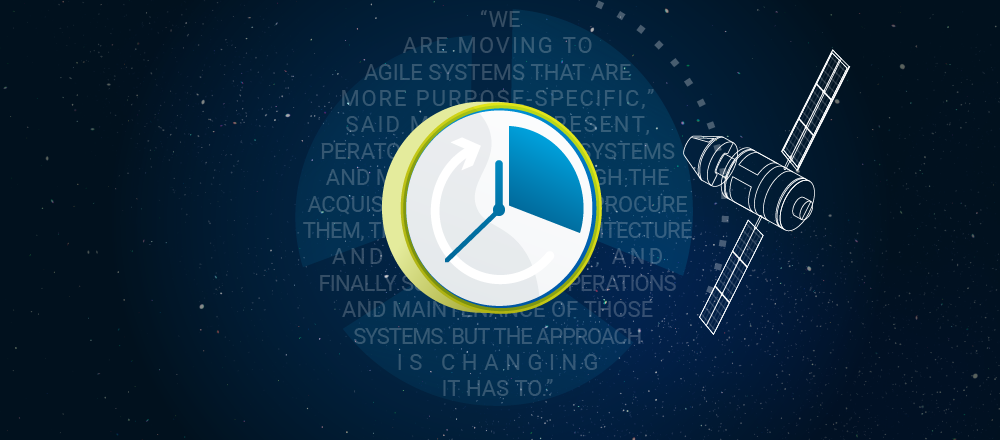“In 1994, satellite scheduling was done with a phone call,” said Mark A., Peraton’s Vice President, Technology & Engineering. “There had to be a dialog to ask for availability. It is not that much more sophisticated today. This resource management problem is still viable only because resources are limited. As the number of satellites launched increases, that could change.”
Though technology has advanced over the last 25 years, there are still limitations in space-based communications. “The future of space-based communications is the continued movement away from the classic monolithic siloed systems controlled by a single contractor from start to finish,” said Matt R., Peraton’s Senior Director of Mission Ground Systems.
The demand for internet connectivity and the reliance upon it will continue to increase. The way space-based communications currently operate will not be sustainable. Historically, satellites have been expensive to build and maintain, required a dedicated ground station, and needed daily scheduling to coordinate the downlinking of the satellite’s data.
“Peraton has put together a number of independent research and development projects (IRADs) to try to overcome these challenges,” said Matt.
Advances in sensors, communication systems, and computation are increasing the capabilities of satellites while reducing their size, weight, and power to make them more agile and flexible. Innovations in reusability, piloted by companies like SpaceX, will reduce launch costs. On-orbit propulsion and refueling will also reduce costs considerably by extending the life of satellites. Laser light will replace radio waves, increasing the amount of information gathered per second. Constellation ownership will become more accessible, diversifying the market. Space missions have historically been led by government agencies—now private companies are entering the arena.

“We are moving to agile systems that are more purpose-specific,” said Matt. “At present, Peraton still designs systems and moves them through the acquisition lifecycle to procure them, then builds the architecture and deploys them, and finally supports the operations and maintenance of those systems. But the approach is changing—it has to.”
Focusing on purpose-built capabilities with a few functions, rather than every function necessary for a successful mission, means that systems can be developed and deployed quickly to meet urgent needs. Small and portable ground structures with an array of antennas can receive data from multiple small satellites simultaneously, eliminating the need to prioritize one transmission over another when an operator needs antenna access. Machine learning will improve complex resource management, deciding how much bandwidth access operators will receive based on their mission requirements.
This future vision is about more than efficiency. Data is at stake. “As we take a look at supporting myriad assets in space, we have to make sure we can handle all the information that is going to be presented to us and make use of it, otherwise we are just dropping it on the floor,” said Matt.
“Think of it like the Boost Mobile of space communications,” added Mark. “Boost Mobile doesn’t own any infrastructure they use, but instead leases bandwidth from other sources with excess capacity. Similarly, Peraton doesn’t own a lot of infrastructure, but we have a design architecture to access and use capacity for space communications globally.”
Space-based communications is moving to a software-centric, cloud-based approach. Peraton is at the forefront of this latest step in the evolution.
Learn more about Peraton’s secure communications capabilities





